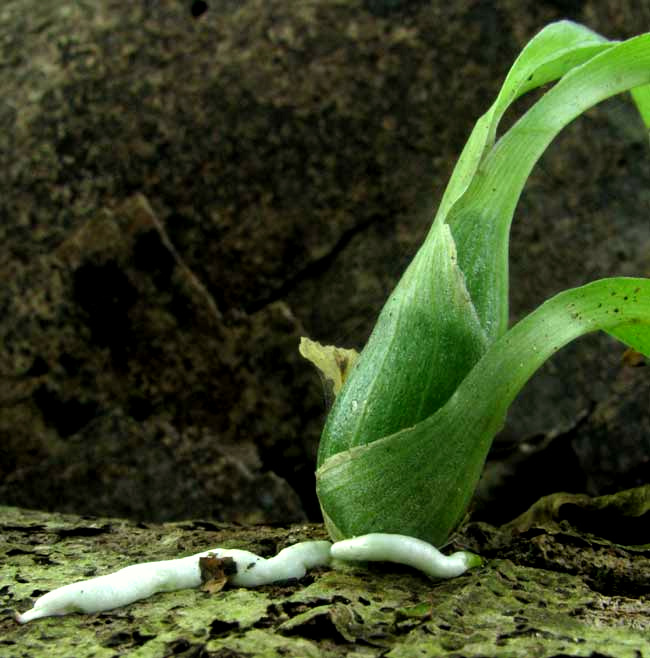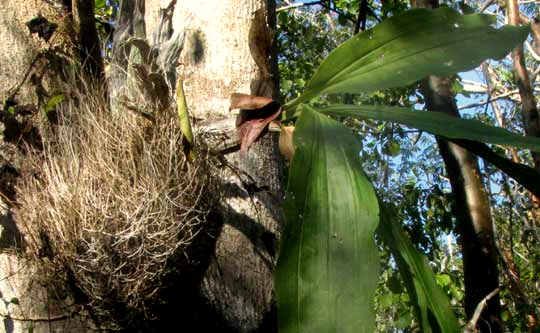Excerpts from Jim Conrad's
Naturalist Newsletter

from the January 15, 2012 Newsletter issued from Hacienda Chichen Resort beside Chichén Itzá Ruins; limestone bedrock; elevation ~39m (~128ft), N20.675°, W88.569°; central Yucatán state, MÉXICO
WHITE ROOTS ON EPIPHYTIC ORCHIDS
Maybe you've noticed that epiphytic orchids -- those growing on trees -- produce very thick, white roots. Those white roots help distinguish orchids from other epiphytic plant types, such as bromeliads. On the same deeply shaded, moldering woodpile in which earlier we found various slime molds forming fruiting bodies, nowadays there's a young orchid, a Catasetum integerrimum, about three inches tall (8cm) and issuing its first roots, as shown above.
Why are those roots so thick and white?
At first I imagined that the white covering was composed of mycorrhiza. Mycorrhizae are fungi living symbiotically on and in plant roots. They improve a root's carbohydrate storage capacity, help the roots absorb more mineral nutrients and transport water, and other things. However, there are two kinds of mycorrhiza: ectomycorrhizae, which form an exterior sheath on roots, and; endomycorrhizae, which live deep inside the roots. And I read that orchids have endomycorrhizae. Our orchid's white root covering is not an ectomycorrhiza.
Finally it occurred to me that often these white roots are seen dangling freely in the air or even standing up as somehow rooting in the air, as shown at the left in the picture of a mature Catasetum integerrimum below:

Googling the topic of orchid absorption of water from the air, eventually I learned that the white, spongy, water-absorbing material covering epiphytic orchid roots (sometimes it can be silvery or brownish) is called "velamen." Anatomically velamen can be thought of as a root's much modified, spongy epidermis. Its main purpose is to wick water from the air, but also it serves as insulation for the roots. Velamen has a layer of thick-walled cells that keeps water from escaping as well as occasional thin-walled cells that allow water from outside to pass toward the root's conducting tissue.
Velamen-covered roots can function as ordinary roots, too, developing root hairs and absorbing nutrients from the host-tree bark it touches. The nutrients it absorbs on the orchid's arboreal perches derive from dead tree-bark, dissolved dust particles, bird droppings and the like.